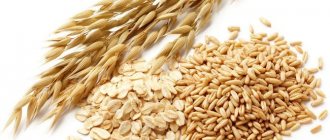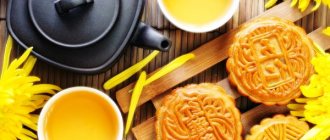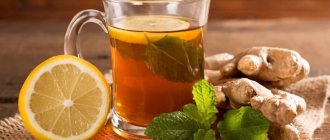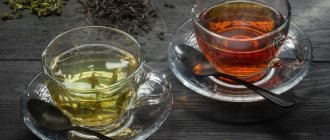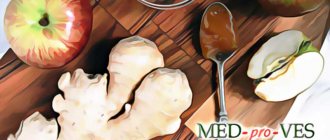An amazing red drink made from brewed petals of the hibiscus plant (as the Sudanese rose is called) managed to conquer, without exaggeration, almost the whole world. The Egyptians knew about it back in ancient times. They highly valued its beneficial properties, considering it a real panacea for any disease. By the way, this tea used to be called nothing more than “the drink of the pharaohs.” This name seems to hide the full power of this medicinal and in all respects extremely beneficial to health drink.
Today, the medicinal properties of hibiscus (this is the correct name for a drink made from hibiscus petals) are confirmed even by official medicine. This tea, among other things, helps well in the fight against excess weight.
If anyone has doubts about how beneficial this tea can be, you can simply try drinking just one cup. Your body will independently give you a signal about the benefits or harms of this drink. In addition, hibiscus tea for weight loss is the simplest and least burdensome remedy in terms of time and money.
Modern use of an ancient drink
India is the birthplace of hibiscus. Hibiscus, rosella, Sudanese rose - these are other names this plant has. Tea has long been brewed from it in many countries, which is confirmed by archaeological excavations.
In the eighteenth century, the Sudanese rose was brought to Eastern Europe, where it became widespread for its ability to prepare a refreshing, healthy drink.
The plant has more than 100 species and is grown in Egypt, Mexico, Sri Lanka, India, China, and Thailand. In these countries, the processing, storage, and packaging of raw materials is industrialized.
A ruby-colored tea made from rosella petals, it has a sour flavor with a subtle hint of astringency. It gives vigor, increases tone, strengthens the body's defenses, and promotes weight loss.
An infusion of hibiscus petals was Cleopatra's favorite drink. The ancient queen knew how to use the gifts of nature to prolong the youth and beauty of the body.
Hibiscus tea and its beneficial properties
Hibiscus petals are used to prepare a flower tea drink. It has a strong red hue and a delicate sweet and sour taste. Africa is considered its homeland. Today the rose is found in Sudan, India, and China.
The benefits of use are as follows:
- Filling the body with nutrients. Sudanese rose contains components of iron, phosphorus, calcium, and essential amino acids.
- Has a positive effect on the functioning of the pancreas. In the blood, insulin produced stabilizes sugar levels.
- Helping the functioning of the stomach, it removes toxins.
- Improves blood circulation.
- Has antipyretic properties.
- It is taken as an antibacterial and tonic.
Tea composition
Hibiscus has gained popularity among many flower tea lovers due to its content of useful substances:
- fruit acids;
- ascorbic, nicotinic acids, vitamin A, B;
- amino acids;
- microelements: magnesium, phosphorus, iron, sodium, calcium.
The population of Arab countries holds this tea in special esteem. It is believed that it relieves many diseases.
Beneficial features
- Hibiscus eliminates bile stagnation, improves digestion, liver function, and relieves bloating due to colitis.
- Has a diuretic and antipyretic effect. It should be taken into account that when taken simultaneously with Paracetamol, its effectiveness is weakened.
- The vitamins contained in Sudanese rose strengthen blood vessels and reduce blood viscosity.
- Tea lowers blood pressure both hot and cold.
- It is an antioxidant, removes toxins, which helps with hangovers and increases resistance to infections.
- Due to its antibacterial effect, it treats purulent wounds. Facilitates the course of eczema and psoriasis.
- Normalizes sugar levels and has a beneficial effect on insulin production.
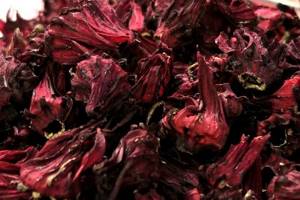
Negative sides
Along with beneficial properties, large consumption can provoke:
- Dehydration of the body. The plant has a diuretic effect.
- Causes diarrhea. This reaction is not typical for everyone, but it is quite real.
- Possible disturbances in the functioning of the gastrointestinal tract with uncontrolled use.
- It is not recommended to take on an empty stomach or before bedtime.
- Ambiguous effect on blood pressure. Iced tea lowers, hot tea increases.
- Stop use while visiting the dentist. The rich color can stain fillings.
When not to drink hibiscus
Due to the content of fruit acids, tea is contraindicated in cases of high acidity. It is necessary to limit intake in case of gastritis and duodenal disease.
Hypotonic patients should drink the drink with caution - weakness and dizziness may occur.
Breastfeeding women and people with allergies are advised to refrain from consuming hibiscus so as not to provoke allergies.
In pregnant women, the plant can cause uterine contractions and bleeding, which can lead to dangerous complications for the fetus.
In order not to harm tooth enamel, after drinking tea, you need to rinse your mouth with water to neutralize the effect of fruit acids. When doing prosthetics or caries treatment, it is recommended to drink the drink through a cocktail straw to avoid staining fillings and crowns.
Hibiscus flowers
Hibiscus flowers are large but rather elegant corollas that reach a diameter of 30 cm. Up to 300 species of Chinese rose are known with flowers of different shapes, sizes and colors. However, most often these are purple flowers, which immediately attract attention - they are so majestic and beautiful.
It is from the flowers that the famous hibiscus tea is prepared, known for its sour taste and tonic properties. To prepare a classic drink, pour 1 tbsp. Add hibiscus flowers to a glass of boiling water, let it brew for up to 5 minutes, after which you can enjoy the great taste and aroma of this exotic plant.
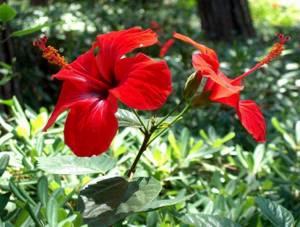
The effect of hibiscus on weight loss
The drink has long been considered a means of helping to lose extra pounds. By normalizing blood sugar levels, it reduces appetite and eliminates false feelings of hunger. And due to its diuretic effect, it removes excess fluid and reduces swelling.
Systematic intake of hibiscus tea when losing weight gives a mild laxative effect, improves metabolism, eliminates toxins and waste, which immediately affects the appearance and the scales.
Fans of “passive” weight loss should know that drinking tea alone will not lead to weight loss in a short time. 1-2 kg of accumulated fluid will go away, and the fat mass will remain in place. Sports and proper nutrition are a guarantee of success.

Features of reception for weight loss
To lose weight, follow simple rules for preparing and drinking the drink:
- It is recommended to take tea in a course of 3-4 weeks, then take a break for 14 days. You need to drink 3 times a day, half an hour before or after meals. This reduces appetite in the first case, while in the second case carbohydrates and fats are broken down.
- Taking it between meals is also possible, but doctors do not recommend drinking more than 1 liter per day due to the content of fruit acids. This can lead to irritation of the epigastrium, discomfort from the digestive organs in the form of heartburn, increased gas formation, and cramps.
- It is advisable to alternate hibiscus with green tea, which will quickly eliminate excess fat.
You cannot pour hot water or boil hibiscus petals, as vitamins and nutrients are destroyed at elevated temperatures. And the color of the drink will turn from bright red to an unattractive brown-gray.
3-day express diet with hibiscus petals for weight loss
The three-day program is designed to cleanse the body. The maximum weight loss is 1.5 kg.
- For breakfast, boiled chicken egg whites with the addition of whole grain bread and low-fat cheese are suitable.
- Lunch consists of vegetable soup and fresh salad (cucumbers and cabbage).
- Dine with a fruit salad and a glass of natural yogurt.
During meal breaks, drink a liter of tea and add unsweetened fruit. It is recommended to follow this diet once every 30 days.
The three-day diet is contraindicated:
- women during pregnancy and lactation;
- suffering from blood pressure;
- kidney disease.
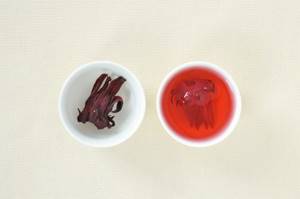
Cooking tips
To enhance the weight loss effect, herbs, berries, fruits, and spices are added to hibiscus:
- Mint and lemon balm will add a subtle aroma to the tea and have a calming effect.
- Cardamom, ginger, cloves, cinnamon will speed up metabolism.
- Milk will provide you with a creamy, delicate taste and add calories when following strict diets.
- Rosehip, lemon, citrus fruits will replenish the body with a dose of vitamins.
Medicinal herbs are prepared in the traditional way: brewed with boiling water, infused, and then mixed with pre-prepared hibiscus.
Honey will add additional aroma and taste to the tea, but you should add no more than 1 tsp. When losing weight, you need to completely give up sugar.
Consider the amount of spices, herbs, and milk based on your own taste and desire.
Traditional recipes
Buy Sudanese rose in specialized tea stores. Choose whole, uncrushed petals; they should have a rich red color. It is better to avoid bagged tea, as it may contain low-quality raw materials.
- The method for preparing tea is simple: 1 tsp. Leaves need to be poured with 500 ml of boiled water at a temperature of 60-80 degrees, let it brew for 1-2 hours.
- No less popular in preparation is an infusion of water at room temperature: 2 tbsp. l. raw materials should be poured into 1 liter of boiled cooled liquid and left for 5-8 hours. The drink is convenient to prepare at night; it turns out to be a rich, bright red color and retains all its healing qualities.
Add lemon and rose hips with caution, in small quantities, especially if the acidity of the stomach is increased.
Recommendations
To prepare hibiscus, use a porcelain, enamel or glass container. In metal containers, the beneficial components of the fortified drink are destroyed.
It is important to know that you should not drink tea on an empty stomach in the morning. The gastric mucosa becomes irritated, acidity increases, which can not only increase appetite, but also harm health.
Hibiscus before bed is also not recommended. The invigorating effect that the plant has will lead to excitability of the nervous system and insomnia.
The daily norm of Sudanese rose petals is no more than 2-2.5 tbsp. l. for 1 liter of water.
How to brew and drink
Hibiscus should not be poured with boiling water. This way it loses some of its valuable substances, including vitamin C. The petals are poured with hot water, like green tea, or cold, and then you get a tasty infusion that takes 6-8 hours to prepare. For one serving of the drink you need 200 ml of hot water (70-80 degrees) and 1 dessert spoon of hibiscus petals. It is enough to steep the tea for 3-5 minutes, let it cool slightly and drink half an hour before meals. The effectiveness of the drink reaches its maximum when consumed warm.

Only glass or ceramic containers are suitable for brewing tea.
The beneficial properties of tea are enhanced when combined with honey. You can add a teaspoon of honey to the warm infusion or drink it as a bite. The maximum volume of red drink per day should not exceed 600 ml (3 cups), otherwise you can change the acidity upward, cause heartburn and provoke gastritis. A drink drunk before a meal dulls your appetite and allows you to eat a smaller portion of lunch.
To prepare a chilled infusion of hibiscus, you can use an empty disposable tea filter bag, pour 2 tablespoons of petals into it and pour 500 ml of cold water over them. The bag is dipped into a container of cold boiled water, placed on a sunlit windowsill and left to steep for about 6 hours. The tonic tea is ready.
Hibiscus is one of the safest and healthiest products that promote weight loss and healthy body. The recommendations of many nutritionists and supporters of proper nutrition speak in its favor. The product is especially valued in the autumn-winter period, when the body lacks vitamins and natural antioxidants.
Experts' opinions
The main advantage of hibiscus is that it is a herbal remedy that accelerates metabolism, unlike the synthetic biological additives that fill drugstore shelves.
But nutritionists come to the only conclusion that losing weight with just one hibiscus drink is impossible. Body weight decreases only due to the diuretic, laxative effect, and normalization of cholesterol levels. Of course, the metabolic process accelerates, toxins and excess fluid are removed. However, this will not help get rid of fat mass.
You can lose weight by taking hibiscus while following a diet. These can be fasting days on vegetables, protein foods with the exception of sweets, fatty foods, and alcohol. The menu should include fish, a large number of vegetables, fruits, and herbs. And, of course, we must not forget about physical activity.
Hibiscus contains no calories. When taken in moderation, it has a healing effect on the body.

Hibiscus flavor
In taste, color and smell, hibiscus is not similar to green, black or any other type of tea.
The well-known sour taste of the drink is given by organic acids, which, in addition, can also fill the human body with energy. Due to its sourness, it is recommended to drink the drink with sugar. The diluted tea is a bit like a weak raspberry compote.
Despite the fact that hibiscus has also been dubbed red sorrel - of course, due to its sour taste - it does not contain oxalic acid. That is why it can be used by people suffering from gout and urolithiasis.
Reader reviews
I somehow decided to try to remove extra pounds with the help of hibiscus. I brewed tea as recommended and drank it for a month. I didn’t notice any special results right away because I didn’t stick to a strict diet. I decided to limit myself to sweets, flour, and fatty foods and continued to drink hibiscus. This helped me lose 2 kilograms. A little, but nice.
Marina, 42 years old
I work as a fitness instructor; I recommend that all my girls who come to me with the goal of losing weight drink hibiscus after training and during the day. I myself prepare an infusion with purified water all the time, just pour the petals in at night. Hibiscus acts on me as a mild laxative, and does not cause stomach pain at all. I recommend to all.
Olga, 33 years old
Previously I suffered from obesity. To lose weight, I discovered the Dukan diet, and I quickly lost weight on it. In order not to return to the previous level, I spend fasting days. I drink a lot of water, alternating hibiscus with green tea. I really like the taste of the ruby drink, as I call it, I add pieces of zest to it. Of course, hibiscus alone is not enough to lose weight, but with regular exercise and proper nutrition, you can maintain weight without gaining weight.
Angelina, 38 years old
When carrying out various diets, include Sudanese rose tea in your diet. It will add strength, speed up metabolism, and help you cope more easily with the stress of losing weight.
Hibiscus in medicine
In medicine, mallow is most often used as tea. Vitamin C contained in Chinese rose is useful in the treatment of diseases such as laryngitis, tracheitis, and bronchitis. For colds, drinking plenty of fluids is usually prescribed. Hibiscus tea will perfectly cope with this role - a tasty, slightly sour, aromatic drink that fills you with strength and energy.
The easiest way to prepare a drink is to brew hibiscus petals and auxiliary herbs or berries.
You will need:
- 1 tbsp. Chinese rose flowers;
- 1 tbsp. dried raspberries.
Preparation:
- Fill it all with boiling water.
- Let it brew for half an hour.
- Then pass the drink through cheesecloth.
The most delicious and healing tea is ready, take it hot when you have a cold as often as possible, especially before bed.
To lower blood pressure, use the following recipe. Pour 1 tsp. mallow petals with a glass of boiling water, let it brew for 20 minutes, strain the resulting liquid. Drink the infusion chilled three times a day. Additional benefits for low blood pressure will come from adding linden, black rowan, and blueberries to tea.

Red tea – separation and product quality
Tea is classified according to preparation methods into black, red and green. Europeans created their own classification, including white and yellow tea, as well as herbal mixtures.
Among teas, red seems to be the most aromatic. It is grown in China and Japan, as well as in Taiwan. Subject to light fermentation at the moment when the leaves located at the ends become slightly red. The finished tea has a spicy, specific smell. It is very durable, you can store it for a long time without worrying about its quality!




